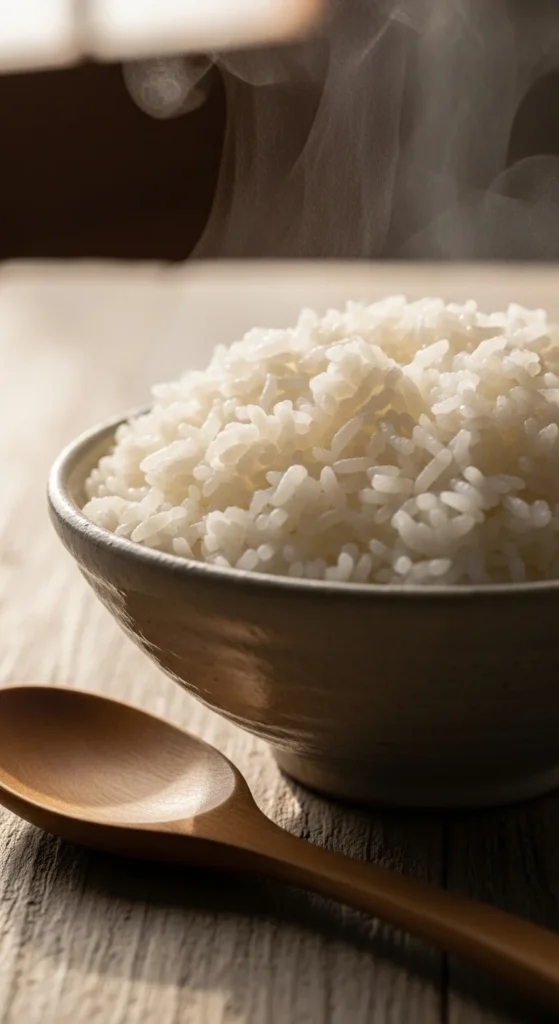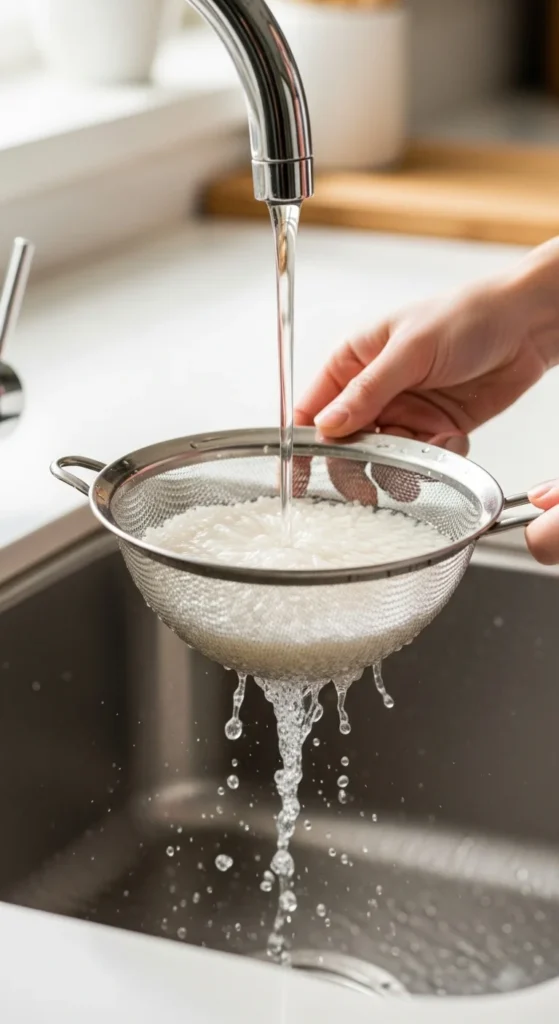There’s nothing worse than lifting the lid on your pot only to find sticky, clumpy rice instead of light, fluffy grains. But don’t worry — perfect rice isn’t a mystery. With a few simple tricks and the right ratio of water to rice, you can turn out restaurant-quality, fluffy rice every single time.

Why Rice Turns Out Sticky (and How to Fix It)
Sticky rice isn’t necessarily a bad thing — it’s just not what most recipes call for. The main reason your rice turns mushy is too much water or over-stirring. Other culprits include skipping the rinse or lifting the lid too soon.
The key to fluffy rice lies in three things:
- Rinsing to remove excess starch.
- Accurate water ratio.
- Letting it rest after cooking.
Once you get these right, you’ll never have soggy rice again.
Step 1: Rinse the Rice
Rinsing might seem optional, but it’s the secret to separating the grains. When rice is packaged, its surface starch can make it gluey when boiled.
How to rinse properly:
- Place your rice in a fine-mesh strainer or bowl.
- Rinse under cool water, swishing with your hand until the water runs clear (about 3–4 rinses).
- Drain well before cooking.
This step washes away that excess starch — leaving behind only the pure, fluffy goodness.

Step 2: Measure the Water (This Matters!)
The perfect rice-to-water ratio depends on the type of rice, but here’s a simple rule of thumb for stovetop cooking:
- White rice: 1 cup rice → 1 ½ cups water
- Brown rice: 1 cup rice → 2 cups water
- Basmati or Jasmine rice: 1 cup rice → 1 ¼ cups water
Tip: Always use the same cup for both rice and water to keep ratios consistent.
Add a pinch of salt and a teaspoon of oil or butter — this adds flavor and helps prevent clumping.
Step 3: Bring to a Boil, Then Simmer Gently
Pour your rinsed rice and measured water into a medium saucepan. Bring it to a gentle boil over medium heat. As soon as bubbles start breaking the surface, lower the heat to a simmer and cover the pot with a tight-fitting lid.
From here, the trick is simple — don’t peek. Every time you lift the lid, steam escapes, which affects how evenly the rice cooks.
Cook times:
- White rice: 15–17 minutes
- Brown rice: 35–40 minutes
- Basmati/Jasmine: 12–15 minutes

Step 4: Let It Steam (Don’t Skip This!)
Once the timer goes off, resist the temptation to stir or serve immediately. Turn off the heat and let the rice sit, covered, for 10 minutes.
This resting period allows the steam to redistribute evenly, which firms up the grains and gives that fluffy texture. Think of it as a “rice cooldown.”
After resting, fluff the rice gently with a fork — not a spoon — to separate the grains without breaking them.

Step 5: Serve and Enjoy
Now you’ve got light, fluffy rice that’s perfect as a base for stir-fries, curries, or grilled dishes. Serve it warm, and watch it disappear fast.
Flavor twist ideas:
- Add a bay leaf or cardamom pod while simmering for subtle aroma.
- Stir in a squeeze of lime and chopped cilantro for fresh flavor.
- Drizzle with melted butter or sesame oil before serving for richness.
Storage tip:
Leftover rice can be stored in the fridge for up to 4 days. Reheat in the microwave with a sprinkle of water and cover it with a damp paper towel to bring back its softness.

Bonus: Foolproof Rice in a Rice Cooker
If you want zero guesswork, use a rice cooker. Just rinse, measure, and press start — it automatically adjusts heat and timing for perfect results.
Rice cooker tip: Let the rice sit on “warm” mode for 10 minutes after cooking — this step mimics the stovetop steam-resting method.
Final Thoughts
Perfect, fluffy rice is all about small details: rinse well, measure carefully, and let it rest before serving. Once you’ve mastered these easy steps, every grain will be light, separate, and absolutely delicious.




Leave a Reply